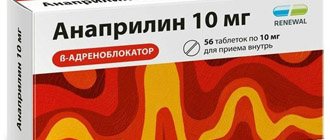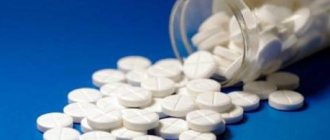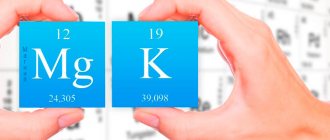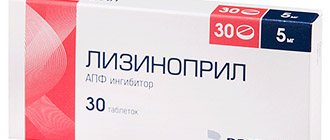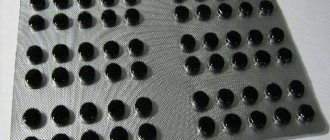Description of the dosage form
Tablets 20 mg: round white tablets, flat on one side, with a chamfer and a score and engraving: above the score - “IR”, below the score - “20”; on the other side - convex, with the engraving “SCHWARZ PHARMA”.
Tablets 40 mg: round white tablets, flat on one side, with a chamfer and a score and engraving: above the score - “IR”, below the score - “40”; on the other side - convex, with the engraving “SCHWARZ PHARMA”.
Tablets 60 mg: round white tablets, flat on one side, with a chamfer and a score and engraving: above the score - “IR”, below the score - “60”; on the other side - convex, with the engraving “SCHWARZ PHARMA”.
Pharmacodynamics
Isosorbide dinitrate causes relaxation of the smooth muscle wall of blood vessels, thereby inducing vasodilation. Isosorbide dinitrate acts as a peripheral vasodilator, affecting both arteries and veins. These effects promote the deposition of venous blood and reduce venous return to the heart, reducing final dBP and left ventricular volume (reduce preload).
Cardiket® prolonged action is characterized by a combination of rapid onset of effect and duration of action.
The advantages of the drug are determined by the fact that the active substance contained in the Kardiketa® prolonged-release tablet quickly enters the bloodstream. As a result, the drug provides a rapid onset of effect in the treatment of angina pectoris and retains its protective effect for a long time.
Analogs of Cardiket that are available on the Russian market
Long-acting nitrates are a fairly popular group of drugs, so finding analogues and cheaper substitutes for Cardiket will not be a problem.
On the Russian pharmaceutical market you can find the following analogues (medicines in which the active ingredient is also isosorbide dinitrate):
Dinisorb;- Nitrosorbide;
- Isacardine;
- Iso Mac Retard;
- Iso Mac spray;
- Nitrosorbide-Rusfar;
- Cardix;
- Aerosonite;
- Nisopercuten;
- Isoket;
- Isolong;
- Monosan (Czech production).
Pharmacokinetics
When taken orally, isosorbide dinitrate is rapidly absorbed. Bioavailability when taken orally - 22% (first pass effect through the liver). The onset of action is after 15-30 minutes, the Cmax of the substance in the blood plasma is reached after 15 minutes - 1-2 hours. As a result of isosorbide dinitrate passing through the liver, it is metabolized to form isosorbide-2-mononitrate and isosorbide-5-mononitrate, which have T1/ 2 1.5–2 and 4–6 hours, respectively. Both metabolites are pharmacologically active. Excreted by the kidneys (almost entirely in the form of metabolites). Binding to blood plasma proteins is 30%.
Side effects
At the beginning of treatment, a headache (“nitrate” headache) may develop, which, as a rule, disappears after a few days with further use of the drug.
Sometimes, upon first use or when increasing the dose of the drug, there is a pronounced decrease in blood pressure, especially when the patient gets out of bed, which may be accompanied by tachycardia (paradoxical bradycardia is also possible), lethargy, as well as dizziness and a feeling of weakness.
Rarely - nausea, vomiting, belching, dry mouth, abdominal pain, as well as redness of the facial skin and allergic skin reactions. In rare cases, with a pronounced decrease in blood pressure, there is an increase in the symptoms of angina pectoris (“paradoxical” intensification of angina attacks).
Very rarely - collaptoid states, sometimes with bradycardia and sudden loss of consciousness (syncope).
In some cases, exfoliative dermatitis may occur.
It is possible to develop tolerance (including cross tolerance to other nitrates).
Interaction
It is possible to enhance the hypotensive effect of Cardiket® prolonged action when used simultaneously with other vasodilators (vasodilators), antihypertensive drugs, beta-blockers, blockers of “slow” calcium channels, phosphodiesterase type 5 inhibitors used to treat erectile dysfunction, antipsychotics and tricyclic antidepressants, procainamide , quinidine, and ethanol.
The simultaneous use of Cardiket® extended-release with dihydroergotamine may lead to an increase in the concentration of dihydroergotamine in the blood and, thus, enhance its hypotensive effect. With the simultaneous use of sympathomimetic drugs, it is possible to reduce the antianginal effect of the long-acting drug Cardiket®.
Contraindications
- drug allergy;
- vascular collapse and shock ;
- severely low blood pressure;
- diseases and conditions accompanied by increased intracranial or intraocular pressure ( glaucoma );
- acute myocardial infarction and hemorrhagic stroke ;
- stenosis;
- head injuries;
- decrease in circulating blood volume;
- combination with phosphodiesterase type 5 inhibitors ( tadalafil, sildenafil, vardenafil ).
The use of the drug is not recommended, or should be under the supervision of a physician.
- in children under 18 years of age;
- with cardiac tamponade;
- pronounced anemia ;
- toxic pulmonary edema;
- hypertrophic obstructive cardiomyopathy ;
- with constrictive pericarditis ;
- chronically low blood pressure ;
- hyperthyroidism;
- severe kidney and liver diseases.
Directions for use and doses
Orally, regardless of food intake, without chewing and with a small amount of liquid.
In the absence of other recommendations, Cardiket® extended release is taken as follows:
Cardiket® prolonged action 20 mg: 1 tablet. 2 times a day. If the therapeutic effect is insufficient, the dose can be increased to 1 tablet. 3 times a day.
Cardiket® prolonged action 40 mg: at the beginning of treatment - 1 tablet. 1 time a day or 1/2 tablet. 2 times a day. If the therapeutic effect is insufficient, the dose can be increased to 1 tablet. 2 times a day. To maintain the therapeutic effect at a dosage of 1 table. 2 times a day, the second tablet should be taken no later than 8 hours after the first.
Cardiket® prolonged action 60 mg: at the beginning of treatment - 1 tablet. 1 per day. If necessary, the dose can be increased to 1 tablet. 2 times a day. To maintain the therapeutic effect at a dosage of 1 table. 2 times a day, it is recommended to take the second tablet no later than 8 hours after the first.
To split a tablet in half, place it on a hard surface with the break line facing up and press your thumb onto the tablet. It will easily separate into two halves.
Treatment should begin with the lowest doses and slowly increase the dose to the maximum effective dose. The doctor decides on the duration of treatment. This drug is intended for long-term use and should not be stopped abruptly without consulting a doctor.
Cardiket
Sublingual, internally, parenterally, locally, externally.
Sublingual. Spray: 1-3 doses (1.25-3.75 mg) are injected into the oral cavity at intervals of about 30 s while holding the breath. If after 5 minutes there is no improvement, inhalation is repeated (subject to constant monitoring of blood pressure and heart rate). To prevent coronary spasm in case of catheterization, 1-2 doses should be administered immediately before the procedure.
Tablets: 2.5-5 mg, if necessary - every 2-3 hours. To relieve an attack of angina - sublingually (to speed up the action, it is advisable to chew the tablet).
Inside. 10-20 mg 4-5 times a day 1 hour before or 2 hours after meals, without chewing, with a glass of water. If the effect is insufficient, from day 3-5 of treatment the dose is increased to 60-120 mg/day. The frequency of administration depends on the duration of action and is 3-4 times for tablets with an average duration of action (tablets containing 5, 10 and 20 mg); for retard tablets 20 mg - 2-3 times; for retard tablets 40 and 60 mg - 2 times; for retard tablets 120 mg - 1 time per day. As part of complex therapy for CHF, 10-20 mg is used 3-4 times a day.
Parenterally. IV drip, 0.1 mg/ml at an initial rate of 3-4 drops/min or 0.2 mg/ml at a rate of 1-2 drops/min. The rate of administration can be increased every 5 minutes by 2-3 drops, depending on the patient’s response (subject to monitoring blood pressure, heart rate, ECG and diuresis). The maximum rate of administration is 33 drops/min (for a solution with a concentration of isosorbide dinitrate of 0.1 mg/ml) and 17 drops/min (for a solution with a concentration of 0.2 mg/ml).
Transbuccally. Plates (20-40 mg) are glued to the mucous membrane of the gums on the front surface of the upper jaw at the level of the incisors or small molars, alternating sides each time, 1-3 times a day.
TTS: the skin area is wiped with ethanol or water; The protective coating is removed from the system, the sticky side is applied to the skin and pressed to ensure contact of the entire surface with the skin. The selected area of skin should be hairless and not subject to intense mechanical stress (the inner surface of the forearm, the side or front surface of the chest, the skin of the back). The following system is glued to another (preferably symmetrical) area of the skin. The dose is proportional to the area and is 0.5-1 mg/sq.cm. To select an individual dose, the system can be cut into pieces of any size. The duration of a single application is 12-24 hours. The course of treatment is 2 weeks. Abrupt withdrawal should be avoided.
Spray for skin application: spray 1-2 doses from a distance of 20 cm and rub it with your fingertips. After the spray has dried, the skin can be covered with clothing. After 20 minutes, the skin areas can be washed.
Ointment: initial dose - 1 g of ointment 1-2 times a day; applied to the chest area, inner surface of the forearms or abdomen; The minimum application surface area is 20 sq.cm.
Overdose
Symptoms: marked decrease in blood pressure, collapse, fainting, headache, dizziness, palpitations, visual disturbances, skin flushing, perspiration, nausea, vomiting, diarrhea, methemoglobinemia (cyanosis, anoxia), hyperpnea, dyspnea, bradycardia, cranial hypertension, paralysis, coma.
Treatment: gastric lavage; for methemoglobinemia - i.v. 1% solution of methylene blue, 1–2 mg/kg. Symptomatic therapy (epinephrine and related compounds are ineffective).
Cardiket 40 mg 20 pcs. extended-release tablets
pharmachologic effect
Peripheral vasodilator with a predominant effect on venous vessels.
Antianginal agent. The mechanism of action is associated with the release of the active substance nitric oxide in the smooth muscles of blood vessels. Nitric oxide causes activation of guanylate cyclase and increases cGMP levels, which ultimately leads to smooth muscle relaxation. Under the influence of isosorbide dinitrate, arterioles and precapillary sphincters relax to a lesser extent than large arteries and veins. This is partly due to reflex reactions, as well as the less intense formation of nitric oxide from active substance molecules in the walls of arterioles. The effect of isosorbide dinitrate is associated mainly with a decrease in myocardial oxygen demand due to a decrease in preload (dilatation of peripheral veins and a decrease in blood flow to the right atrium) and afterload (reduction in peripheral resistance), as well as with a direct coronary dilation effect. Promotes redistribution of coronary blood flow in areas with reduced blood supply.
Increases exercise tolerance in patients with coronary artery disease and angina pectoris. In heart failure, it helps to unload the myocardium by reducing preload. Reduces pressure in the pulmonary circulation.
Composition and release form Cardiket 40 mg 20 pcs. extended release tablets
Tablets - 1 tablet:
- Active substance: isosorbide dinitrate 40 mg.
- Excipients: lactose monohydrate, magnesium stearate, polyvinyl acetate, talc.
10 pieces. — contour cell packaging (2) — cardboard packs.
Description of the dosage form
Extended-release tablets are white, round, flat on one side, chamfered and scored, with “IR” engraved above the score and “20” below the score; on the other side they are convex, with the engraving “SCHWARZ PHARMA”.
Directions for use and doses
When taken orally, a single dose is 10-120 mg, frequency of administration is 1-5 times a day, depending on the indications and the dosage form used.
For sublingual or buccal use, a single dose is 5-10 mg, the frequency of administration depends on the indications and the patient’s response to treatment.
When injected into the oral cavity, 1-3 doses are used at intervals of about 30 seconds while holding the breath. For acute myocardial infarction and acute heart failure, the initial dose is 1-3 injections. If there is no improvement after 5 minutes, the injection can be repeated subject to constant monitoring of blood pressure and heart rate. To prevent coronary spasm in case of catheterization, 1-2 doses should be administered immediately before the procedure.
When administered intravenously, the dosage regimen depends on the clinical situation and the dosage form used.
For cutaneous use, the initial dose is 1 g at night, before bedtime, and, if necessary, in the morning.
The duration of treatment is determined in each case individually.
Pharmacodynamics
Isosorbide dinitrate causes relaxation of the smooth muscle wall of blood vessels, thereby inducing vasodilation. Isosorbide dinitrate acts as a peripheral vasodilator, affecting both arteries and veins. These effects promote the deposition of venous blood and reduce venous return to the heart, reducing final dBP and left ventricular volume (reduce preload). Cardiket® prolonged action is characterized by a combination of rapid onset of effect and duration of action. The advantages of the drug are determined by the fact that the active substance contained in the Kardiketa® prolonged-release tablet quickly enters the bloodstream. As a result, the drug provides a rapid onset of effect in the treatment of angina pectoris and retains its protective effect for a long time.
Pharmacokinetics
When taken orally after absorption from the gastrointestinal tract, isosorbide dinitrate undergoes a “first pass” effect through the liver. Cmax in blood plasma is achieved after 1 hour. When administered buccally, isosorbide dinitrate is rapidly absorbed, Cmax of the active substance in plasma is achieved after 5-6 minutes.
Metabolized to form the active metabolite isosorbide-5-mononitrate, T1/2 of which is 5 hours, as well as isosorbide-2-mononitrate with T1/22.5 hours.
T1/2 of isosorbide dinitrate, depending on the dosage form used, varies from 20 minutes to 4 hours. It is excreted by the kidneys and through the intestines.
Indications for use Cardiket 40 mg 20 pcs. extended release tablets
For oral, sublingual, buccal administration: relief and prevention of angina attacks, rehabilitation treatment after myocardial infarction. Chronic heart failure (as part of combination therapy), some forms of pulmonary hypertension, cor pulmonale (as part of combination therapy).
For injection into the oral cavity: relief and prevention of angina attacks; as an emergency medicine for acute myocardial infarction and acute left ventricular failure at the prehospital stage. Prevention and treatment of coronary artery spasm when using a cardiac catheter.
For intravenous administration: acute myocardial infarction, incl. complicated by acute left ventricular failure; unstable angina; pulmonary edema.
For cutaneous use: prevention of angina attacks.
Contraindications
Severe arterial hypotension (systolic blood pressure less than 100 mm Hg, diastolic blood pressure less than 60 mm Hg), collapse, shock, acute myocardial infarction with severe arterial hypotension, hypertrophic obstructive cardiomyopathy, constrictive pericarditis, cardiac tamponade, toxic pulmonary edema , conditions accompanied by increased intracranial pressure (including hemorrhagic stroke, traumatic brain injury), angle-closure glaucoma, simultaneous use of sildenafil (PDE inhibitor), increased sensitivity to nitrates.
Application of Cardiket 40 mg 20 pcs. extended-release tablets during pregnancy and breastfeeding
The use of isosorbide dinitrate during pregnancy and lactation (breastfeeding) is possible only if the expected benefit to the mother outweighs the potential risk to the fetus or child.
special instructions
Use with caution in patients with cerebrovascular accidents, aortic and/or mitral stenosis; in patients prone to orthostatic hypotension; in elderly patients. During treatment, especially in the case of a gradual increase in dose, monitoring of blood pressure and heart rate is necessary.
During the treatment period, avoid drinking alcohol.
Impact on the ability to drive vehicles and operate machinery
During the treatment period, it is not recommended to drive vehicles or engage in other potentially hazardous activities, because with regular use, isosorbide dinitrate reduces the ability to concentrate and the speed of psychomotor reactions.
Overdose
Symptoms: marked decrease in blood pressure, collapse, fainting, headache, dizziness, palpitations, visual disturbances, skin flushing, perspiration, nausea, vomiting, diarrhea, methemoglobinemia (cyanosis, anoxia), hyperpnea, dyspnea, bradycardia, cranial hypertension, paralysis, coma. Treatment: gastric lavage; for methemoglobinemia - iv 1% solution of methylene blue, 1-2 mg/kg. Symptomatic therapy (epinephrine and related compounds are ineffective).
Side effects Kardiket 40 mg 20 pcs. extended release tablets
From the cardiovascular system: dizziness, headache, tachycardia, transient facial hyperemia, feeling of heat, arterial hypotension; in some cases - increased attacks of angina (paradoxical reaction).
From the digestive system: nausea, vomiting, a slight burning sensation of the tongue, dry mouth.
From the central nervous system and peripheral nervous system: drowsiness, blurred vision; rarely - cerebral ischemia and collapse.
Allergic reactions: skin rash.
Drug interactions
When used simultaneously with adsorbents, astringents and enveloping agents, the absorption of isosorbide dinitrate decreases.
With the simultaneous use of antihypertensive drugs, peripheral vasodilators, calcium channel blockers, beta-blockers, antipsychotics (neuroleptics), tricyclic antidepressants, PDE inhibitors, ethanol, the hypotensive effect may be enhanced.
When used simultaneously with anticholinergic drugs, memory and attention problems may occur in elderly patients.
When used simultaneously with sympathomimetic drugs, the antianginal effect of isosorbide dinitrate may be reduced.
When used simultaneously with dihydroergotamine, it is possible to increase the concentration and enhance the effect of dihydroergotamine.
When used simultaneously with norepinephrine, the therapeutic effect of norepinephrine decreases.
When used simultaneously with sildenafil, there is a risk of developing severe arterial hypotension and myocardial infarction.
special instructions
Cardiket® prolonged action is not used to relieve angina attacks! During the treatment period, monitoring of blood pressure and heart rate is necessary. With constant continuous treatment using high dosages of Cardiket® prolonged action, the development of tolerance, as well as the emergence of cross-tolerance to other drugs of the nitrate group, is possible. To prevent a decrease in the effectiveness of the long-acting Cardiket® drug, continuous use of high dosages should be avoided. When taking Cardiket® prolonged action in patients with primary pulmonary diseases, temporary hypoxemia may occur due to the relative redistribution of blood flow to hypoventilated alveolar zones. In patients with coronary artery disease, this can lead to transient myocardial ischemia. During treatment with the drug, alcohol consumption should be avoided.
Impact on the ability to drive vehicles
During the period of therapy with Cardiket®, it is necessary to refrain from driving vehicles and engaging in potentially hazardous activities that require increased concentration and speed of psychomotor reactions.
